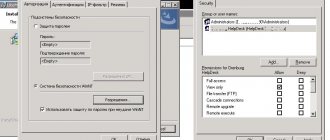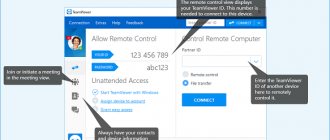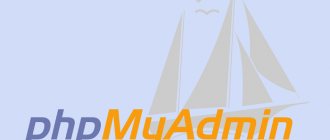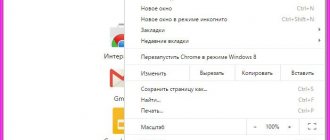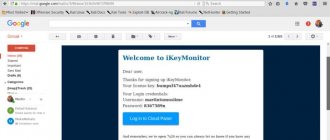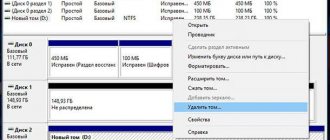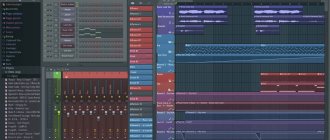| 1C: Trade Management 8.0 is a new generation solution for comprehensive automation of management and accounting in trade organizations. |
- 1C:Enterprise 7.7 Working with commercial equipment
“1C: Trade and Warehouse” is the “Operational Accounting” component of the “1C: Enterprise” system with a standard configuration for automating warehouse accounting and trade.
The “Operational Accounting” component is designed to account for the availability and movement of material and cash resources. It can be used both independently and in conjunction with other 1C:Enterprise components.
“1C: Trade and Warehouse” is designed to record all types of trade transactions. Thanks to its flexibility and customizability, the system is capable of performing all accounting functions - from maintaining directories and entering primary documents to receiving various statements and analytical reports.
|
New functionality and service capabilities:
- Improved pricing mechanism.
- A “quick sale” operation that allows you to automatically generate and print the required package of documents when selling a group of products.
- Accounting for imported goods by CCD numbers.
- Group processing of reference books and documents.
- Automatic initial filling of documents.
- Possibility of detailing mutual settlements with counterparties in the context of contracts.
For more details, see edition 9.2 of the standard configuration “Trade + Warehouse”
Automation of any trade and warehouse operations
“1C: Trade and Warehouse” automates work at all stages of an enterprise’s activities.
A typical configuration allows:
- maintain separate management and financial records
- keep records on behalf of several legal entities
- maintain batch accounting of inventory with the ability to select a cost write-off method (FIFO, LIFO, average)
- keep separate records of your own goods and goods taken for sale
- register the purchase and sale of goods
- perform automatic initial filling of documents based on previously entered data
- keep records of mutual settlements with buyers and suppliers, detail mutual settlements under individual agreements
- generate the necessary primary documents
- issue invoices, automatically build a sales book and a purchase book, keep quantitative records in the context of customs declaration numbers
- carry out reservation of goods and payment control
- keep records of funds in current accounts and in the cash register
- keep records of trade loans and control their repayment
- keep records of goods transferred for sale, their return and payment
In "1C: Trade and Warehouse" you can:
- set the required number of prices of different types for each product, store supplier prices, automatically control and quickly change the price level
- work with related documents
- perform automatic calculation of write-off prices for goods
- quickly make changes using group processing of directories and documents
- keep records of goods in various units of measurement,
- and cash - in various currencies
- receive a wide variety of reporting and analytical information on the movement of goods and money
- automatically generate accounting entries for 1C: Accounting.
Working with distributed information bases*
The main purpose of tools for working with distributed information bases is to organize a unified automated accounting system at enterprises that have geographically remote facilities: branches, warehouses, stores, order receiving points and other similar units not connected by a local network:
- maintaining an unlimited number of autonomously working information databases
- full or selective data synchronization
- setting up the composition of synchronized data
- arbitrary order and method of transferring changes
The use of distributed information base management tools does not limit the actions of system users. The system automatically tracks all data changes and transmits them in accordance with the described synchronization rules.
* The “Distributed Information Base Management” component is supplied separately
Reliability and safety
"1C: Trade and Warehouse" contains tools to ensure the safety and consistency of information:
- the ability to prohibit users from “directly” deleting information
- special data deletion mode with cross-reference control
- the ability to prohibit users from editing data for previous reporting periods
- setting a ban on editing printed forms of documents
- “locking” the system by the user during a temporary interruption of operation.
Flaws
Unfortunately, the warehouse program has not only advantages, but also disadvantages. The main disadvantage can be considered the high cost of the license. Please note that to work in the network version, you will have to pay for each workplace. Do not forget that the development of the eight will cost more.
In an organization that uses less than 10 computers, 1C version 8 will work slower than TiS v.7.7. Don't forget about support, which is not provided for outdated versions.
Downloading 1c: trade and warehouse is not difficult, but only qualified personnel can work with the program. Therefore, you will have to spend money on employee training.
Flexibility and customizability
“1C: Trade and Warehouse” can be adapted to any accounting features at a particular enterprise. The system includes a Configurator, which allows you to configure all the main elements of the system if necessary:
- edit existing and create new necessary documents of any structure
- change screen and printed forms of documents
- create journals for working with documents and randomly redistribute documents among journals for efficient work with them
- edit existing and create new directories of arbitrary structure
- edit directory properties: change the composition of details,
- number of levels,
- code type,
- code uniqueness check range
- and other
Openness and accessibility
"1C: Trade and Warehouse" contains a variety of tools for connecting with other programs.
The ability to import and export information via text files will allow you to exchange data with almost any program.
In addition, the built-in language contains tools for working with DBF files.
Also, 1C: Trade and Warehouse supports modern application integration tools: OLE, OLE Automation and DDE. Using these tools allows you to:
- manage the operation of other programs using the built-in 1C: Trade and Warehouse language - for example, generate reports and graphs in Microsoft Excel
- access “1C: Trade and Warehouse” data from other programs
- insert into documents and reports “1C: Trade and Warehouse” objects created by other programs - for example, place a company logo in primary documents
- place pictures and graphs in documents and reports.
“1C: Trade and Warehouse” implements support for open standards: exchange of commercial information (CommerceML) and exchange of payment documents (1C: Enterprise – Bank Client). This makes it possible:
- generate and upload commercial offers to Web storefronts that support the standard
- organize electronic exchange of catalogues, price lists and documents with your counterparties
- exchange payment documents (payment orders and statements) with the Client-bank systems
From 1C: Trade and Warehouse you can manage your own Web storefront located on the resource www.torgcenter.ru
1C: Trade and Warehouse is integrated with the database of the UNISKAN/EAN Russia Association. By reading the barcode from the label placed on the product packaging with a scanner, the system can automatically generate a request, obtain data about the product and record it in the information database.
Feedback from course participants
Maria Alimova, 56 years old
“I am an accountant with 35 years of experience. To be competitive with the young people, I had to learn how to work with the program at the training center. Everything turned out to be simple and clear.”
Evgenia Belyaeva, 29 years old
“I graduated from technical school 10 years ago with a degree in Accountancy, but children were born one after another. Now I can go to work, but without knowledge of the 1C program they won’t hire me anywhere. Therefore, I took courses and received a certificate. They have already offered 3 vacancies - now I choose.”
Maxim Koval, 34 years old
“I am an individual entrepreneur, my turnover is small. I have completed accounting courses in 1C Trade and Warehouse, and now I do accounting myself.”
Vera Kravchenko, 44 years old
“The knowledge that is given in the courses completely changes the view on modern accounting methods .”
Working with commercial equipment**
“1C: Trade and Warehouse” provides work with commercial equipment: cash registers, receipt printers, scanners and barcode printers, electronic scales, data collection terminals, customer displays and other types of equipment.
“Intelligent” interaction with retail equipment allows, for example, filling out documents by reading barcodes of goods with a scanner.
** Additional components and methods of working with commercial equipment are supplied separately.
How to choose courses
The level of knowledge acquired affects further career development, therefore, when choosing a training center, pay attention to some parameters.
Official partner of "1C"
At the Certified Training Centers for the 1C Trade and Warehouse program (CSW), teaching staff are trained by the software manufacturer, pass exams, and receive certificates confirming their qualifications. The level of knowledge increases regularly.
Teachers of this level determine the prestige of an educational institution that guarantees the quality of education.
Study plan and duration
These options depend on the expected results. Basic knowledge can be obtained in a 10-hour course. A deeper study will take more time.
Price
In Moscow and other cities you can take training for free. If the course is paid, then carefully read and analyze all the points of the curriculum to see if there is any information that is useless to you.
Seasonal discounts are an opportunity to save money. There are often offers of tuition discounts for the unemployed or students. Tuition becomes cheaper in the summer.
Document confirming training
The educational institution issues a certificate confirming the training. You need to pay attention to what type it is and how it is ranked among employers. Further employment depends on this, especially if you are studying for the first time.
Beware of scammers. This popular area of training has attracted scammers who sell irrelevant knowledge for large sums. Before concluding an agreement for receiving educational services, check the license of the educational institution and read reviews on the Internet.
Purchasing the program
“1C: Trade and Warehouse” is distributed through a network of partner organizations in the CIS and Baltic countries. To purchase programs, contact your partner. A complete list of partners can be obtained at.
expands the network of partners. We are looking for organizations capable of providing services for the sale, installation, configuration and maintenance of 1C:Enterprise for users.
See also:
- 1C: ASPECT. Compact trading system.
- E.L. Shuremov “Computer accounting of trade operations”
Advantages
If we compare 1C trade and warehouse with products such as S-Market or BEST, we can highlight a number of advantages. First of all, it should be noted the flexibility of the program. Unlike competitors, 1c is open, that is, programmers can easily add missing components or change existing ones.
The 1c: TiS program allows you to closely interact with the accounting department. As for analogues, things are much more complicated there. For accounting to work correctly, you need to download all the necessary modules.
Another advantage can be considered the analysis of demand for goods. Of course, competitors also implement a similar function, but you will have to work hard to ensure that it displays information correctly. In Trade and Warehouse everything is clear, and most importantly, the information is true.
An important advantage can also be considered the formation of orders to suppliers. In this case, planned purchases are taken into account. The program analyzes balances and, based on them, sends a request to suppliers via the Internet.
The software for warehouse and trade allows you to customize pricing. It doesn't matter how many price types there are. It is also worth considering that purchase data is saved, and on its basis the retail price is formed.
It is important to consider that anyone can download 1C Enterprise, but it is better to download the latest version of the product for free. The only thing worth remembering is that for full-fledged operation you will still have to purchase a license.

